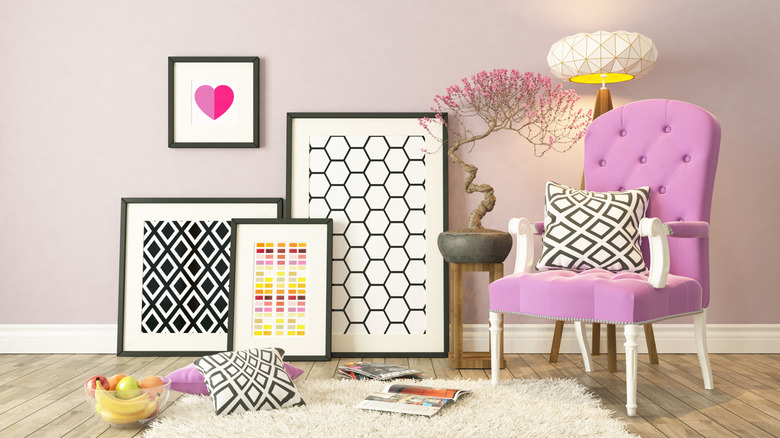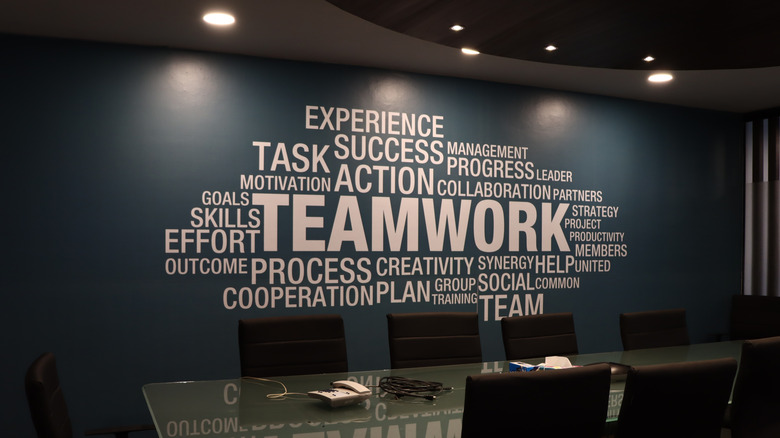The 2010s Art Trend That's Officially Outdated (& How To Update The Look)
The 2010s were dominated by a variety of interior design styles such as cool-toned, neutral color schemes, shiplap, chevron, and mid-century-style furniture. And while some of these decor trends stand the test of time and continue to have enduring appeal into the 2020s, others have officially gone by the wayside. One key example of a trend that has begun to feel undoubtedly unfashionable is wordy wall art.
You will likely have spotted this kind of decor in everything from kitchens and bathrooms to business spaces like offices and coffee shops. Whether it's a quirky phrase in neon lettering or a canvas printed with a heartfelt message, these pieces have begun to feel overdone and a bit redundant. So, if you are considering adorning your living room wall with a decal reminding your guests to "Live, Laugh, Love," you may want to reconsider or risk causing your space to feel outdated or even cliché. But if interior design trends are moving away from art centered around words, what styles should you try out instead?
Alternatives to wordy wall art
The 2020s have replaced the cookie-cutter, machine-made designs of the previous decade with an emphasis on nature-inspired styles and curvy pieces with soft angles. Knowing this can help you decide on some wall art that feels more trendy than the outdated slogans that have dominated years past. For example, in contrast to the sharp, geometric patterns of chevron and block lettering, why not opt for more abstract art that emphasizes curves and organic shapes? You could even try out a DIY textured wall art idea to make your space feel unique, homemade, and on-trend. These works have become particularly popular due to the rise of AI art as many designers find themselves leaning into designs that emphasize an obvious human element, such as distinctive blemishes and brushstrokes.
In addition, the last few years have seen an uptick in environmental awareness, and interior design is very much a part of this shift, too. Pieces like this Lucky Woven Leaf Wall Art from Healthier Homes use organic shapes and materials in their designs, placing significance on earthy, natural substances. Many popular decor companies are also backing up their nature-inspired styles with environmentally friendly production processes such as using recycled paper and planting trees to offset consumption. So, if you want to update your home's art with something that feels contemporary and fresh, it may be a good idea to choose some sustainable interior decor from businesses that are known for their responsible practices.

